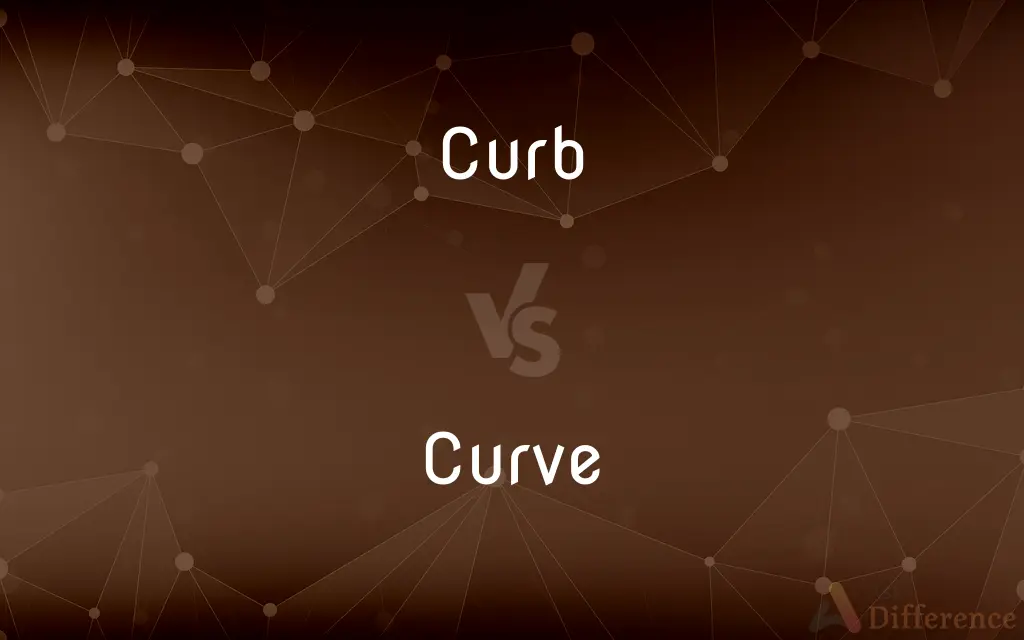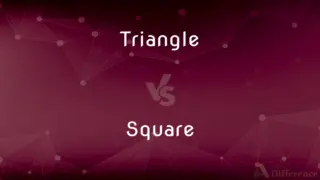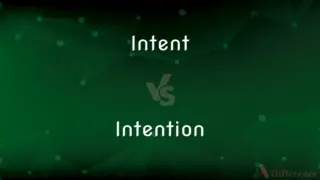Curb vs. Curve — What's the Difference?
By Tayyaba Rehman & Fiza Rafique — Updated on April 5, 2024
A curb is a concrete edge along a street or sidewalk, meant to delineate spaces and improve pedestrian safety, while a curve is a line or surface that bends smoothly, often found in roads, geometry, or designs.

Difference Between Curb and Curve
Table of Contents
ADVERTISEMENT
Key Differences
A curb, in urban infrastructure, refers to the raised edge between a sidewalk and the roadway. It serves multiple purposes, including pedestrian safety by providing a physical barrier, aiding in water drainage, and defining the roadway boundary. Curbs are constructed of concrete or stone and are a critical component in urban planning and design. On the other hand, a curve is a general term that describes any line or surface that deviates from being straight, without angles. In the context of roads, a curve refers to a section where the road changes direction. In mathematics or design, curves can represent various shapes, from simple arcs to complex forms like spirals or ellipses.
The construction and maintenance of curbs are managed by municipal authorities or urban planners, focusing on durability, functionality, and safety. Curves, however, are defined by their geometric properties and can be created naturally or by design in various contexts, such as in nature, art, and science. While curbs are a static part of urban infrastructure, curves can be dynamic, changing depending on the perspective and context in which they are viewed or designed.
Urban development projects consider the placement and specifications of curbs to manage pedestrian and vehicular traffic effectively. In contrast, the study and application of curves cross multiple disciplines, including physics, for motion paths; engineering, for structure design; and art, for aesthetic appeal. The significance of a curb lies in its ability to enhance safety and order in urban environments. Meanwhile, the concept of a curve is essential for understanding movement, design principles, and natural forms.
Despite their differences, both curbs and curves contribute to the functionality and aesthetics of environments. Curbs ensure the orderly division and use of urban spaces, while curves add dynamics and visual interest to both man-made and natural settings.
Comparison Chart
Definition
A concrete or stone edge between a sidewalk and road
A line or surface that smoothly deviates from straight
ADVERTISEMENT
Purpose
Enhance safety, aid in drainage, define boundaries
Describe motion or shape, add aesthetic value
Material
Concrete, stone
N/A
Context
Urban planning, road construction
Mathematics, design, nature, roads
Role
Static part of infrastructure
Dynamic, depending on context
Importance
Safety, functionality in urban environments
Understanding movement, design, and natural forms
Compare with Definitions
Curb
Designed for pedestrian safety and water drainage.
Rainwater flows along the curb into the drainage system.
Curve
A line that smoothly bends without angles.
The artist drew a perfect curve for the sculpture's outline.
Curb
A concrete edge separating sidewalks from roads.
The new curb installation improved pedestrian safety.
Curve
Found in roads, changing direction.
Drivers slow down when approaching a sharp curve on the highway.
Curb
Part of urban infrastructure planning.
Urban planners designed the curbs to enhance the city's walkability.
Curve
Represents motion paths in physics.
The curve of the ball's path was affected by wind resistance.
Curb
Managed by municipal authorities.
The city council approved the curb replacement project.
Curve
Can be natural or designed.
The curve of the river follows a path through the landscape.
Curb
Defines roadway boundaries.
Drivers park their cars next to the curb, adhering to city regulations.
Curve
Essential in design for aesthetic appeal.
The architect incorporated elegant curves into the building's design.
Curb
A curb (North American English), or kerb (Commonwealth English except Canada; see spelling differences), is the edge where a raised sidewalk or road median/central reservation meets a street or other roadway.
Curve
In mathematics, a curve (also called a curved line in older texts) is an object similar to a line, but that does not have to be straight. Intuitively, a curve may be thought of as the trace left by a moving point.
Curb
A check or restraint on something
Plans to introduce tougher curbs on insider dealing
Curve
A line that deviates from straightness in a smooth, continuous fashion.
Curb
A type of bit with a strap or chain attached which passes under a horse's lower jaw, used as a check.
Curve
A surface that deviates from planarity in a smooth, continuous fashion.
Curb
Variant spelling of kerb
Curve
Something characterized by such a line or surface, especially a rounded line or contour of the human body.
Curb
A swelling on the back of a horse's hock, caused by spraining a ligament.
Curve
A relatively smooth bend in a road or other course.
Curb
Restrain or keep in check
She promised she would curb her temper
Curve
A line representing data on a graph.
Curb
Lead (a dog being walked) near the curb to urinate or defecate, in order to avoid soiling buildings, pavements, etc.
Curve
A trend derived from or as if from such a graph
"Once again, the politicians are behind the curve" (Ted Kennedy).
Curb
A concrete border or row of joined stones forming part of a gutter along the edge of a street.
Curve
A graphic representation showing the relative performance of individuals as measured against each other, used especially as a method of grading students in which the assignment of grades is based on predetermined proportions of students.
Curb
An enclosing framework, such as that around a skylight.
Curve
The graph of a function on a coordinate plane.
Curb
A raised margin along an edge used to confine or strengthen.
Curve
The intersection of two surfaces in three dimensions.
Curb
Something that checks or restrains
High interest rates put a curb on spending.
Curve
The graph of the solutions to any equation of two variables.
Curb
A chain or strap that passes under a horse's lower jaw and serves in conjunction with the bit to restrain the horse.
Curve
(Baseball) A curve ball.
Curb
A market, originally on a street or sidewalk, for trading securities that are not listed on a stock exchange.
Curve
(Slang) Something that is unexpected or designed to trick or deceive.
Curb
To check, restrain, or control (an impulse or activity, for example); rein in.
Curve
To move in or take the shape of a curve
The path curves around the lake.
Curb
To prevent (a person or group) from doing something or acting in a certain way.
Curve
To cause to curve.
Curb
To lead (a dog) off the sidewalk into the gutter so that it can excrete waste.
Curve
(Baseball) To pitch (a ball) with a curve.
Curb
To furnish with a curb.
Curve
To grade (students, for example) on a curve.
Curb
A concrete margin along the edge of a road; a kerb (UK, Australia, New Zealand)
Curve
(obsolete) Bent without angles; crooked; curved. Category:en:Curves
A curve line
A curve surface
Curb
A raised margin along the edge of something, such as a well or the eye of a dome, as a strengthening.
Curve
A gentle bend, such as in a road.
You should slow down when approaching a curve.
Curb
Something that checks or restrains; a restraint.
Curve
A simple figure containing no straight portions and no angles; a curved line.
She scribbled a curve on the paper.
Curb
A riding or driving bit for a horse that has rein action which amplifies the pressure in the mouth by leverage advantage placing pressure on the poll via the crown piece of the bridle and chin groove via a curb chain.
Curve
A grading system based on the scale of performance of a group used to normalize a right-skewed grade distribution (with more lower scores) into a bell curve, so that more can receive higher grades, regardless of their actual knowledge of the subject.
The teacher was nice and graded the test on a curve.
Curb
(North America) A sidewalk, covered or partially enclosed, bordering the airport terminal road system with adjacent paved areas to permit vehicles to off-load or load passengers.
Curve
(analytic geometry) A continuous map from a one-dimensional space to a multidimensional space.
Curb
A swelling on the back part of the hind leg of a horse, just behind the lowest part of the hock joint, generally causing lameness.
Curve
(geometry) A one-dimensional figure of non-zero length; the graph of a continuous map from a one-dimensional space.
Curb
(transitive) To check, restrain or control.
Curb your dog
Curve
(algebraic geometry) An algebraic curve; a polynomial relation of the planar coordinates.
Curb
(transitive) To rein in.
Curve
(topology) A one-dimensional continuum.
Curb
(transitive) To furnish with a curb, as a well; to restrain by a curb, as a bank of earth.
Curve
The attractive shape of a woman's body.
Curb
Ellipsis of curb stomp
Curve
(transitive) To bend; to crook.
To curve a line
To curve a pipe
Curb
(transitive) To bring to a stop beside a curb.
Curve
(transitive) To cause to swerve from a straight course.
To curve a ball in pitching it
Curb
(transitive) To damage vehicle wheels or tires by running into or over a pavement curb.
Curve
(intransitive) To bend or turn gradually from a given direction.
The road curves to the right
Curb
(transitive) To bend or curve.
Curve
(transitive) To grade on a curve (bell curve of a normal distribution).
The teacher will curve the test.
Curb
(intransitive) To crouch; to cringe.
Curve
(transitive) (slang) To reject, to turn down romantic advances.
I was once curved three times by the same woman.
Curb
To bend or curve.
Crooked and curbed lines.
Curve
Bent without angles; crooked; curved; as, a curve line; a curve surface.
Curb
To guide and manage, or restrain, as with a curb; to bend to one's will; to subject; to subdue; to restrain; to confine; to keep in check.
Part wield their arms, part curb the foaming steed.
Where pinching want must curb thy warm desires.
Curve
A bending without angles; that which is bent; a flexure; as, a curve in a railway or canal.
Curb
To furnish with a curb, as a well; also, to restrain by a curb, as a bank of earth.
Curve
A line described according to some low, and having no finite portion of it a straight line.
Curb
To bend; to crouch; to cringe.
Virtue itself of vice must pardon beg,Yea, curb and woo for leave to do him good.
Curve
To bend; to crook; as, to curve a line; to curve a pipe; to cause to swerve from a straight course; as, to curve a ball in pitching it.
Curb
That which curbs, restrains, or subdues; a check or hindrance; esp., a chain or strap attached to the upper part of the branches of a bit, and capable of being drawn tightly against the lower jaw of the horse.
He that before ran in the pastures wildFelt the stiff curb control his angry jaws.
By these men, religion,that should beThe curb, is made the spur of tyranny.
Curve
To bend or turn gradually from a given direction; as, the road curves to the right.
Curb
An assemblage of three or more pieces of timber, or a metal member, forming a frame around an opening, and serving to maintain the integrity of that opening; also, a ring of stone serving a similar purpose, as at the eye of a dome.
Curve
The trace of a point whose direction of motion changes
Curb
A frame or wall round the mouth of a well; also, a frame within a well to prevent the earth caving in.
Curve
A line on a graph representing data
Curb
A curbstone.
Curve
A baseball thrown with spin so that its path curves as it approach the batter
Curb
A swelling on the back part of the hind leg of a horse, just behind the lowest part of the hock joint, generally causing lameness.
Curve
The property possessed by the curving of a line or surface
Curb
An edge between a sidewalk and a roadway consisting of a line of curbstones (usually forming part of a gutter)
Curve
Curved segment (of a road or river or railroad track etc.)
Curb
A horse's bit with an attached chain or strap to check the horse
Curve
Turn sharply; change direction abruptly;
The car cut to the left at the intersection
The motorbike veered to the right
Curb
A stock exchange in New York
Curve
Extend in curves and turns;
The road winds around the lake
Curb
The act of restraining power or action or limiting excess;
His common sense is a bridle to his quick temper
Curve
Form an arch or curve;
Her back arches
Her hips curve nicely
Curb
Lessen the intensity of; temper; hold in restraint; hold or keep within limits;
Moderate your alcohol intake
Hold your tongue
Hold your temper
Control your anger
Curve
Bend or cause to bend;
He crooked his index finger
The road curved sharply
Curb
To put down by force or authority;
Suppress a nascent uprising
Stamp down on littering
Conquer one's desires
Curve
Form a curl, curve, or kink;
The cigar smoke curled up at the ceiling
Curb
Keep to the curb;
Curb your dogs
Curb
Place restrictions on;
Curtail drinking in school
Common Curiosities
Can curves be found in nature?
Yes, curves can be naturally occurring, such as in rivers, landscapes, and the forms of living organisms.
How do curbs contribute to urban safety?
Curbs contribute to urban safety by providing a physical barrier between pedestrians and vehicular traffic, and aiding in effective water drainage.
How do curves enhance design?
Curves enhance design by adding aesthetic appeal, guiding movement, and contributing to the functionality and ergonomics of objects and spaces.
What does a curve represent?
A curve represents any line or surface that smoothly deviates from being straight, found in various contexts like roads, geometry, and design.
What materials are used to construct curbs?
Curbs are usually constructed from concrete or stone, chosen for their durability and ability to withstand environmental elements.
What is a curb?
A curb is a raised edge, typically made of concrete or stone, that separates a street from a sidewalk, enhancing pedestrian safety and aiding in water drainage.
Are curves only important in roads?
No, curves are important in many areas, including mathematics for describing shapes, design for aesthetics, and physics for illustrating motion paths.
Can curves be mathematical?
Yes, curves are fundamental in mathematics, used to describe and study the properties of various shapes and functions.
How do curves affect driving?
Curves affect driving by requiring adjustments in speed and direction to navigate safely, especially on roads.
Why are curbs important in road construction?
Curbs are important in road construction because they define roadway boundaries, enhance pedestrian safety, and support effective water drainage systems.
How do urban planners decide where to place curbs?
Urban planners decide curb placement based on factors like pedestrian and vehicular traffic patterns, safety considerations, and water drainage needs.
What distinguishes a curb from a curve?
A curb is a physical infrastructure element that separates spaces for safety and order, while a curve is a conceptual or physical line or shape that bends.
Why are curves significant in art and architecture?
Curves are significant in art and architecture for their ability to evoke emotion, guide visual movement, and contribute to the overall harmony and balance of a design.
Can an object have both curbs and curves?
Yes, an object can have both curbs and curves, each serving different functional or aesthetic purposes, such as in landscape design.
How are curbs installed?
Curbs are installed by pouring concrete or placing preformed stone into a designed shape and position, often as part of larger road construction or urban development projects.
Share Your Discovery

Previous Comparison
Triangle vs. Square
Next Comparison
Intent vs. IntentionAuthor Spotlight
Written by
Tayyaba RehmanTayyaba Rehman is a distinguished writer, currently serving as a primary contributor to askdifference.com. As a researcher in semantics and etymology, Tayyaba's passion for the complexity of languages and their distinctions has found a perfect home on the platform. Tayyaba delves into the intricacies of language, distinguishing between commonly confused words and phrases, thereby providing clarity for readers worldwide.
Co-written by
Fiza RafiqueFiza Rafique is a skilled content writer at AskDifference.com, where she meticulously refines and enhances written pieces. Drawing from her vast editorial expertise, Fiza ensures clarity, accuracy, and precision in every article. Passionate about language, she continually seeks to elevate the quality of content for readers worldwide.














































